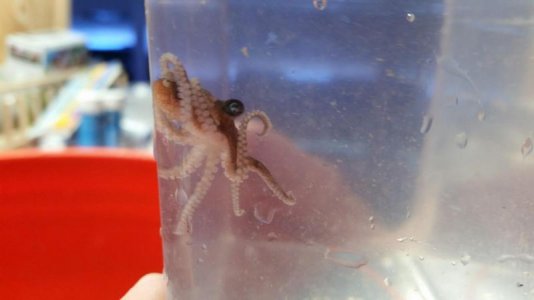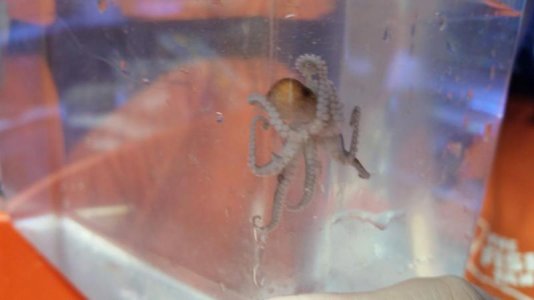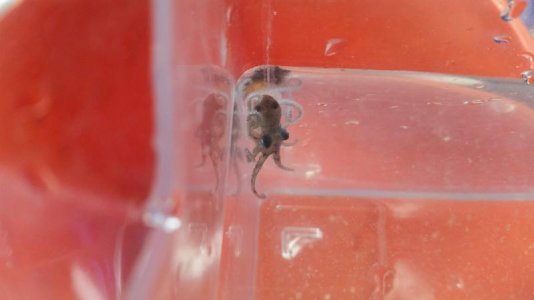What a cutie! Check out the forums on tonmo.com for care.
The biggest thing to know right off the bat - octopuses are a species-only creature. They're "eat or be eaten." Little guys will be eaten or harassed by almost anything else in the tank with fins. Big guys will...consume their tank-mates, given time.
So keep your little guy separate. A critter-keeper within the larger tank works fine for now. Fill that critter-keeper with rocks/PVC piping, plenty of stuff for him/her to make a den and hide; octopuses need a place to hide to feel safe.
Next, your little guy needs food. Octopuses primarily eat crustaceans - think crabs and shrimp. Hermit crabs count as food for a little octopus; they may eat snails and baby clams too, give it a try. It's easy to throw some of your CUC into its enclosure. Shore shrimp and grass shrimp are also a good option. Tiny tiny fiddlers with disabled claws are another option. Many octopuses will only take live food initially, but can learn to take frozen in time - try feeding by hand on a feeding stick to be sure you observe him/her eating. I've eventually managed to get mine onto frozen raw softshell crab and frozen raw shrimp, using a feeding stick.
That plus pristine water quality (they're messy eaters, like any predator), and absolutely no copper, are the big ones. And of course octo-proofing; that little thing can fit through just about any tiny hole in your system. That includes getting into circulation pumps if they aren't protected.



